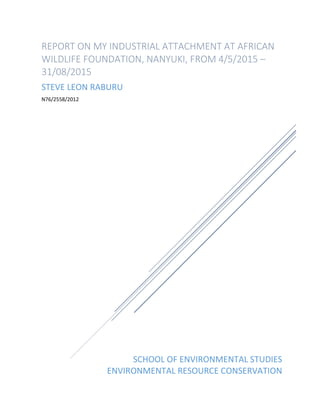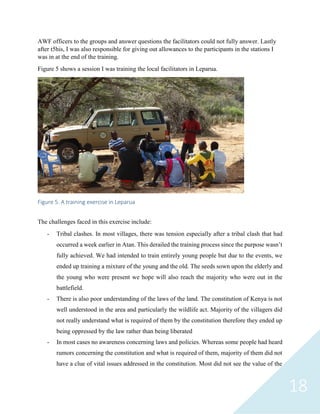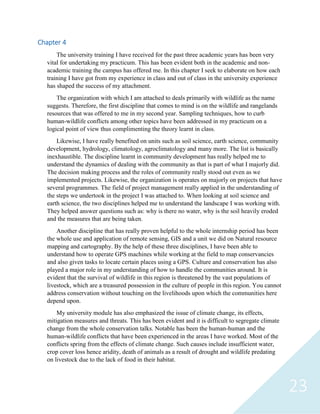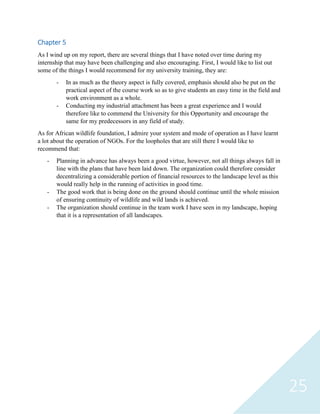The document reports on the author's 3-month internship with the African Wildlife Foundation (AWF) in their Samburu landscape office in Nanyuki, Kenya. During this time, the author assisted AWF with projects such as constructing predator-proof livestock enclosures, reviewing a conservation plan, mapping conservancies, and providing natural resource training to communities. The internship provided the author with hands-on experience in conservation science and an opportunity to learn skills that will support their studies.




























